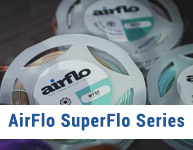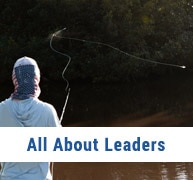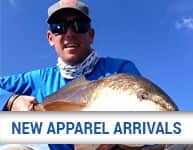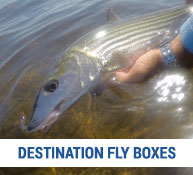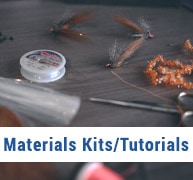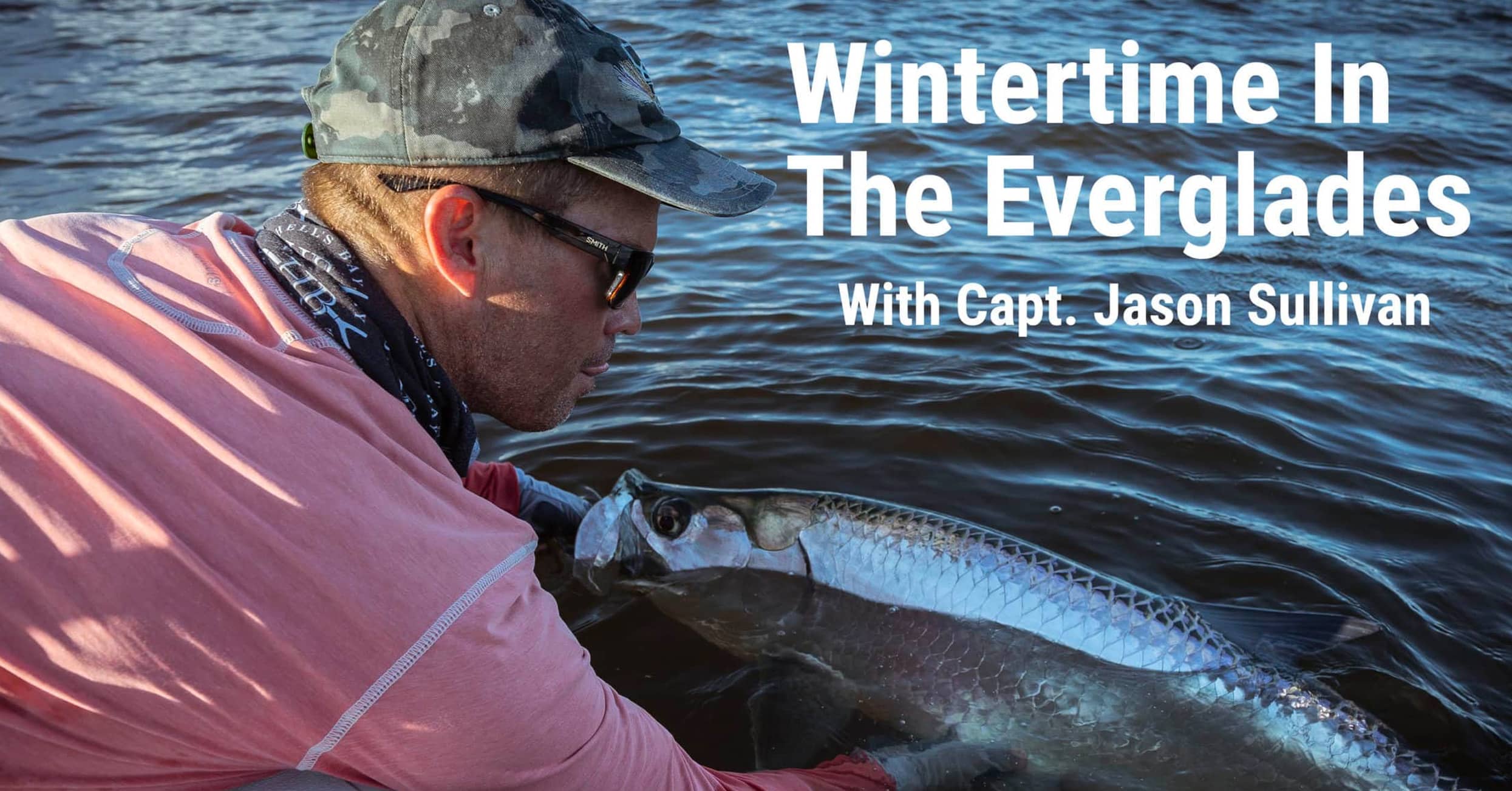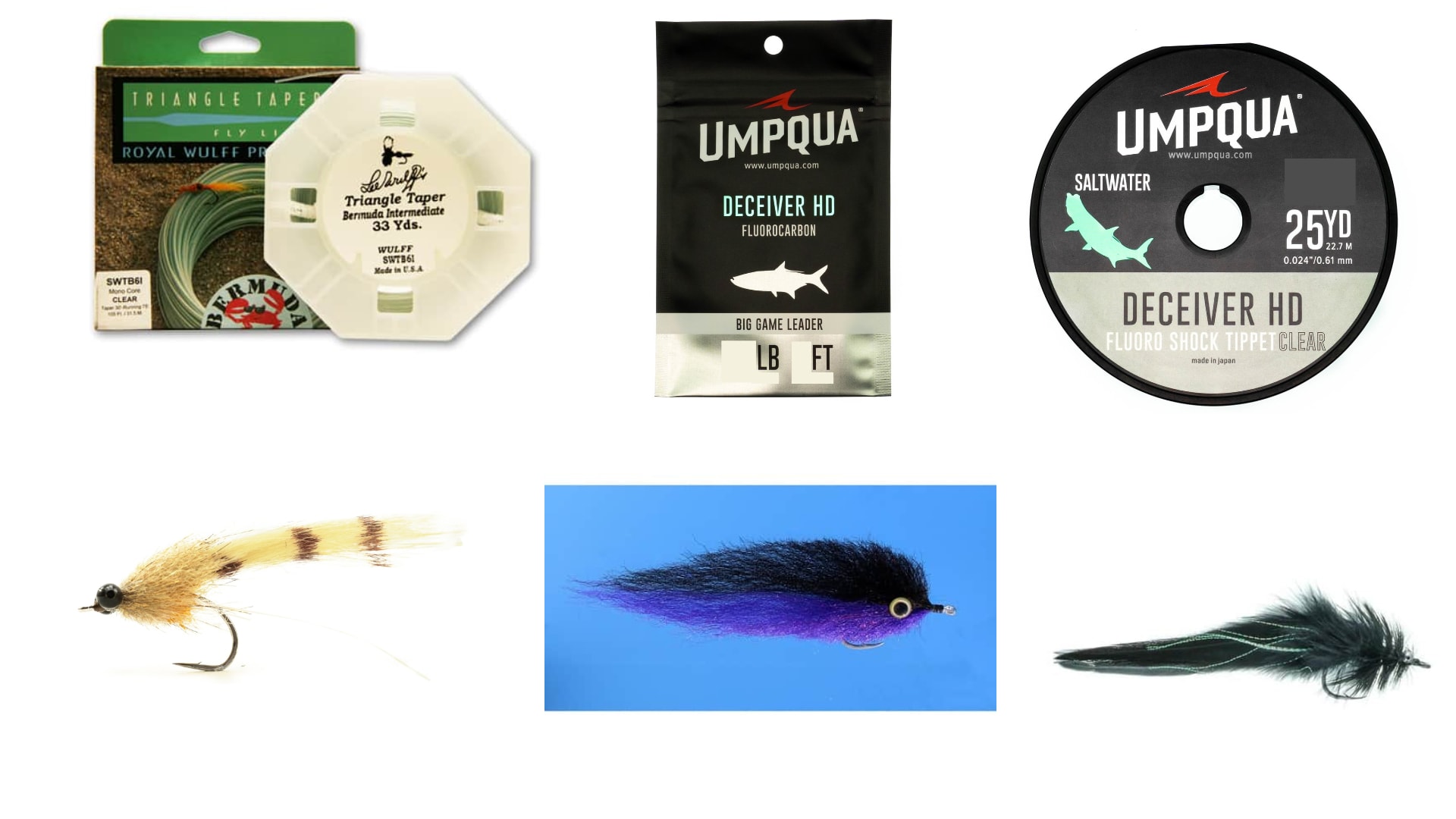As the Florida weather starts to shift to cooler temperatures with bright high skies it makes for an incredible experience in Everglades National Park with some of the best fishing you can have all year. We met up with Captain Jason Sullivan of Rising Tides Charts, someone who spends most of his life trying to figure this place out, to get some more insight into winter fishing patterns in the Glades.
Keep in mind that 3-5 day long cold fronts rolling in from the north will play the biggest part in planning and finding fish on your trip.
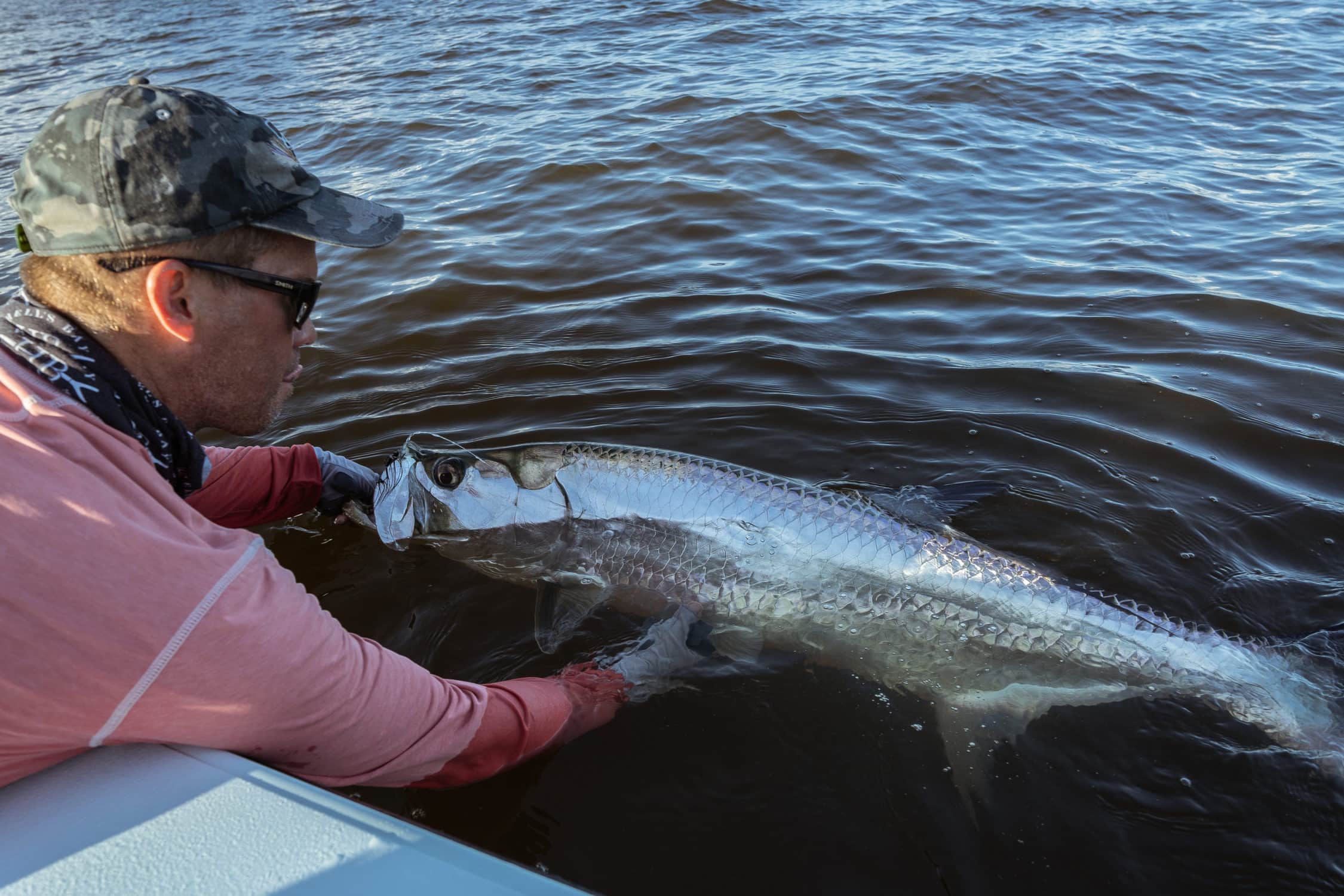
Large Tarpon
Large tarpon can be found thick in the winter months when you have the right weather. Finding them between fronts is the most exciting fishing you can get in the backcountry. To pinpoint where they will be, let’s take a look at water temps and wind. Water temperature must be over 73°F. Over 75°F is ideal. Under 73°F there may be some fish around but they will definitely be acting liking major prima-donnas and you may need a second mortgage to buy a bite. Consistent winds without a lot of fluctuation in direction for a few days + warm water = a great chance of finding the large winter tarpon. Whitewater Bay is the holding ground for these fish. Looking for rolling fish, birds overhead, or heck, even a free jumper will help you find them.
The tackle that you will be throwing: a fly rod to match the size of fish you are in. You will generally end up with a 10, 11 or 12 weight rod in your hand. I find myself grabbing the 11 almost every time. The fish found in Whitewater are going to be deeper than your traditional oceanside fish. Finding them 3-5 feet down at the lower range of depth is common. For that, we almost always throw an intermediate line. Our favorite being the Royal Wulff Bermuda Triangle Taper Intermediate. As far as leaders go, there are so many different leader options. The most effective and easiest way to go about it is, getting the Umpqua Deceiver HD Big Game Fluorocarbon Leader in 9Ft 20Lb and a spool of 60 or 80LB fluorocarbon for a bite section of 2Ft. This gives you an 11 foot total leader length. The full fluorocarbon, knotless construction allows your fly to get down deeper in the water column better than traditional monofilament or nylon. When it comes to flies, fish in the backcountry are much less selective and are eager to eat a well-presented fly (normally). We like to try large patterns first, normally black and purple, something like an EP Peanut Butter in 3/0. If that does not work, (which it normally does) going to a smaller, natural pattern like a Giacobba’s Skrimp will get it done.
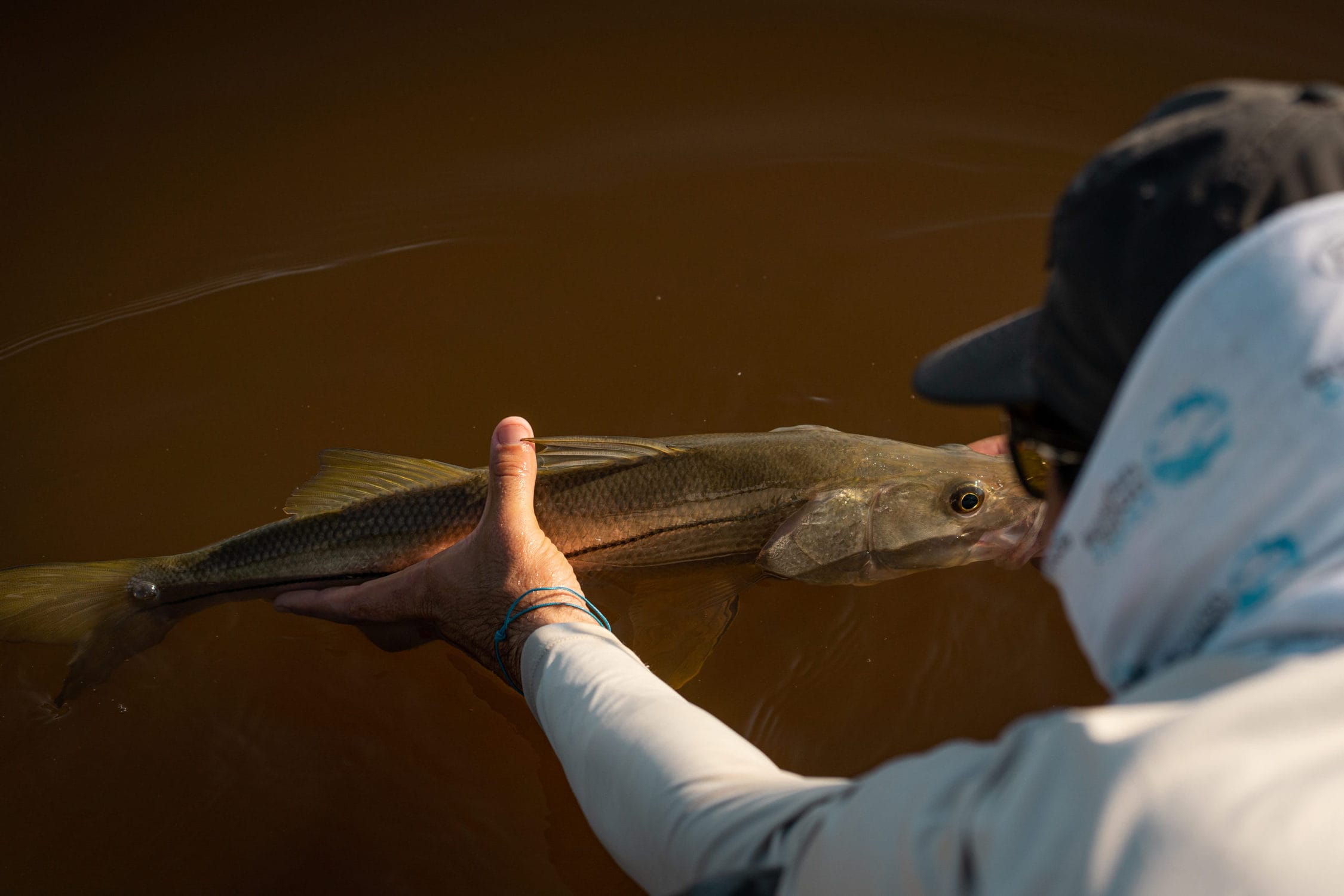
Snook
Snook fishing in cooler weather can be the most visual, knee-shaking thing there is to do. Seeing a log about 3 feet long, sitting horizontally in slightly tannic color water, and being able to place a fly right where it needs to be – it gives me jitters just trying to type this.
With chillier water temps, fish want to be able to heat up as fast as possible. When the sun starts to get up in the bright clear skies overhead that winter brings, snook will push as shallow as possible over darker mud/dark color bottoms, because it heats up faster than anywhere else.
The fish you find in these back areas are eager and willing to eat small baitfish flies with ferocity. Something like an EP Perfect Minnow in 1/0 (Chartreuse is my favorite) is an awesome choice. There is a good possibility that you will find redfish up on the shallows as well, so it’s not a bad idea to either have a rod with a crab pattern stripped out or to have a good fly that works for both, like a Colby’s Love Bug.
An 8 or 9 weight rod is perfect. I’d personally almost always reach for the 9 weight to be sure that when you hook the one you have been after, you have enough pulling power to get the fish out and clear of the mangroves. Any floating fly line will be good and the leaders are not complicated either. A standard 9Ft 20lb Leader, something like Umpqua Perform X All Purpose Leader works well. At the end of that, a 25-35lb fluorocarbon bite section of around 1-2 feet gives you a 10-11 foot leader overall. A 20lb class allows you to slightly brush on mangrove roots if the fish happens to get into the roots of the mangroves.
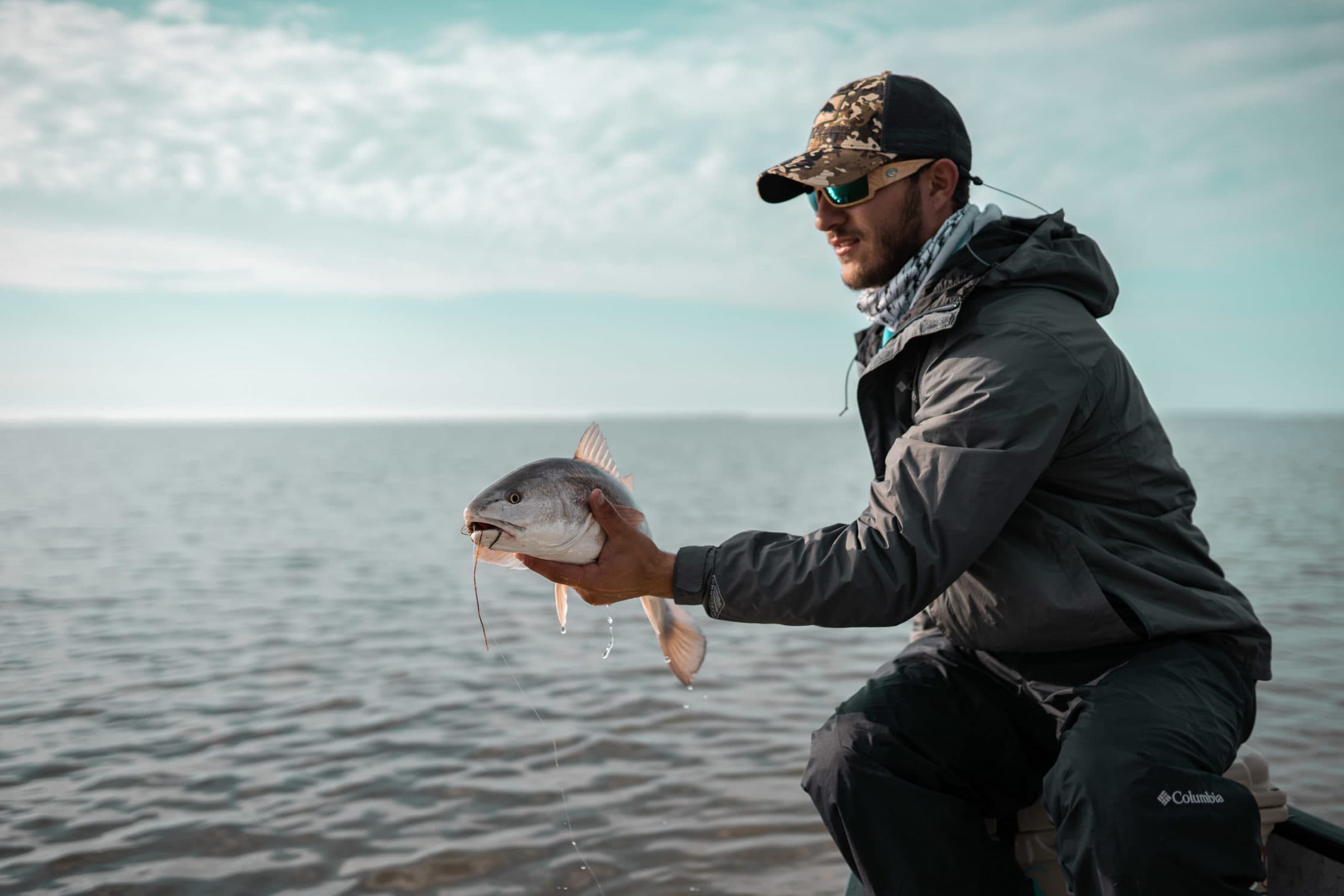
Redfish
If I had to describe wintertime red fishing with one word, that word would be epic.
In the wintertime, redfish will seek warmer water as snook do. Redfish this time of year will go as shallow as they ever do to seek food, with their eyes almost dry. Dark muddy bottoms with the sun coming up overhead at the lower ends of the tides will prove most productive. One of the main differences in wintertime from the rest of the year is that you will not find as many singles and doubles. You will be looking for larger schools of fish upwards of 20 plus.
Florida Bay can be incredibly productive with the larger schools of fish. The western coast of the Everglades, up to Chokoloskee, holds an insane amount of shallow mud bottom flats that hungry redfish dwell on. Looking for tidal flow and birds are the two biggest signs of productive redfish grounds.
When it comes to gear, fishing the open flats with a 6-8 weight provides a sporty fun fight. Floating lines are a necessity for fish on the flats. My favorite being the Scientific Anglers Amplitude Smooth Grand Slam. Leaders are simple; a standard 9-foot leader with a 1-foot section of fluorocarbon works perfectly. We like the RIO Redfish/Seatrout leader in 16lb with the 1-foot piece of fluorocarbon being 16lb or 20lb.
When choosing flies for these fish, baitfish, crab and shrimp patterns are money. The determining factor is going to involve what you see when you are fishing. Pods of finger mullet or smaller whitebaits along the beach tell you right away to start with a baitfish. If you are in a shallow area with birds digging their beaks in the ground, that means there are crustaceans in the area. In that situation, it wouldn’t be a bad idea to start with a crab or imitation. A go-to fly that I will not redfish without is Giacobba’s Blue Claw; it is a deadly pattern in almost any situation. For picking the baitfish fly when you see schools of mullet, trying matching the size. Normally the EP Finger Mullet in #2/0 is perfect.
For any other questions, feel free to contact the shop!
Written by Michael Passalacqua (OFFS Social Media Director) with help from Capt. Jason Sullivan.

